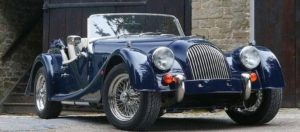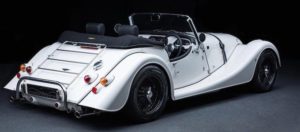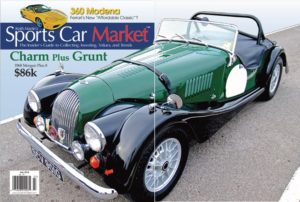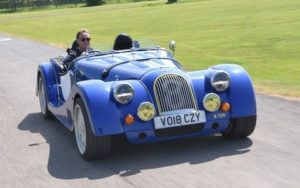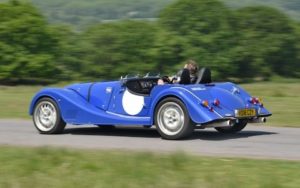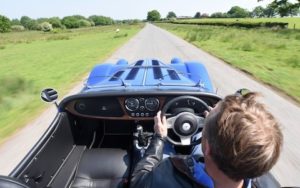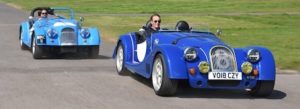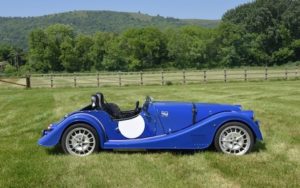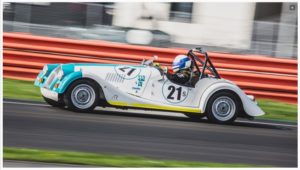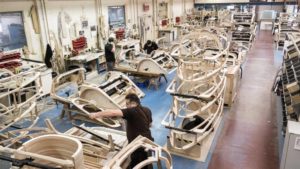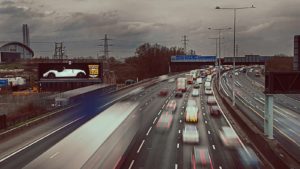TWI combines heritage with innovation for the Morgan Motor Company (www.cambridgenetwork.co.uk) July 17, 2018
[This is mostly a technical discussion about advanced manufacturing processes necessitated by the challenges faces with joining dissimilar metals, like those used by the MMC.
For those of you that want the ‘CliffsNotes’ version the good news is that the Morgan Motor Company is now working with others, paid for by UK grants, on ways to improve joining dissimilar alloys, resulting in weight saving, strength gains and ultimately lower costs. All good stuff!
In my opinion, the MMC needs to keep up with evolving technologies, within reason, rather than become complacent in ‘old school’ ways. Cheers, Mark]

Established in 1909, The Morgan Motor Company produces the longest-running production car in the world, the Morgan 4/4, which has been in production since 1936.
Famous for their heritage, the British manufacturer is rightly proud of their history of hand-built sports cars, but that doesn’t mean that they haven’t kept up with the times. Morgan collaborated with TWI in an Innovate UK project to further optimise the structural design of their vehicles, while reducing manufacturing costs.
Car manufacturers are being challenged by progressively stricter emission regulations and an overall demand for higher fuel efficiency. One of the most immediate ways to achieve this is to decrease the weight of the vehicles by using lighter materials and optimising the structure of the car body. A smarter use of materials often means lowering raw material and assembly costs, especially when several parts can be consolidated to form an integral piece. Lightening a car may also improve handling, which is paramount to a sports car manufacturer such as Morgan.
Car bodies are made predominantly of stamped sheet metal. One of the solutions for maximising the structural performance of stamped parts is a tailor welded blank fabrication. Dissimilar materials can be joined in the same blank prior to stamping, tailoring local properties like strength, ductility or corrosion resistance. Sheet thickness can also be tailored according to the expected load path, saving unnecessary material.
Although steel laser welded blanks have been an established solution since the 90s, there has been a progressive integration of aluminium alloys in car bodies. However, aluminium tailor welded blanks are not as widely available in the market. Suppliers typically offer laser welded products in 5xxx or 6xxx series aluminium alloys. Using a fusion welding process to join aluminium blanks has inherent drawbacks like porosity formation (which can be minimised, but not completely avoided) and solidification cracking, especially when joining 6xxx. Solidification cracking in 6xxx series can be mitigated by using a filler material (typically from the 4xxx or 5xxx series), but will require a slower welding speed compared to autogenous welding, making this application less cost-effective. The alloy of the joint made with a filler wire has significantly inferior strength and formability. Using a filler will also cause what is known as an overfilled joint (i.e. a weld bead proud of the sheet surface). By standing proud of the sheet surface, an overfilled joint negatively affects the stamping operation making the joint more likely to split. Furthermore, aluminium laser welded joints often lack ductility, limiting the complexity of the stamped parts. Furthermore, there are no current offers in the market for supplying blanks in higher strength aluminium series, namely 2xxx and 7xxx.
Funded by Innovate UK, project LightBlank’s aim was to develop and fully implement a UK-based supply chain to manufacture aluminium alloy friction stir tailor welded blanks formed by a new stamping process called Hot Form Quenching (HFQ). HFQ combines solution heat treatment, stamping, quenching and artificial ageing. Complex aluminium blanks can be stamped while restoring the parent material properties. Friction stir welding (FSW) avoids many of the problems associated with joining aluminium using traditional techniques. It can also promote superplastic behaviour of the joint, enabling more ambitious geometries to be stamped. The consortium included Impression Technologies Ltd, PAB Coventry Ltd, Imperial College of London, Bombardier Transportation, Bombardier Aerospace, Morgan Motor Company Manufacturing and TWI Ltd.
The FSW-HFQ procedure developed was used to manufacture a prototype cross-member of the Morgan Aero 8 sports car. Replacing the main element of the cross-member with a FSW-HFQ blank reduced the weight of the assembly by 32%. Additionally, the new optimised design incorporated eight parts (instead of eleven), five of which can be pressed by HFQ in the same operation. This contributed to a significant reduction of the manufacturing and assembly lead times. A preliminary economic assessment shows that cost of manufacturing the new assembly is 37% lower, assuming an annual batch of 1000 units.
Upon the successful completion of this project, a prototype was placed on permanent display at TWI’s headquarters in Cambridge following an official unveiling attended by representatives from Morgan.

